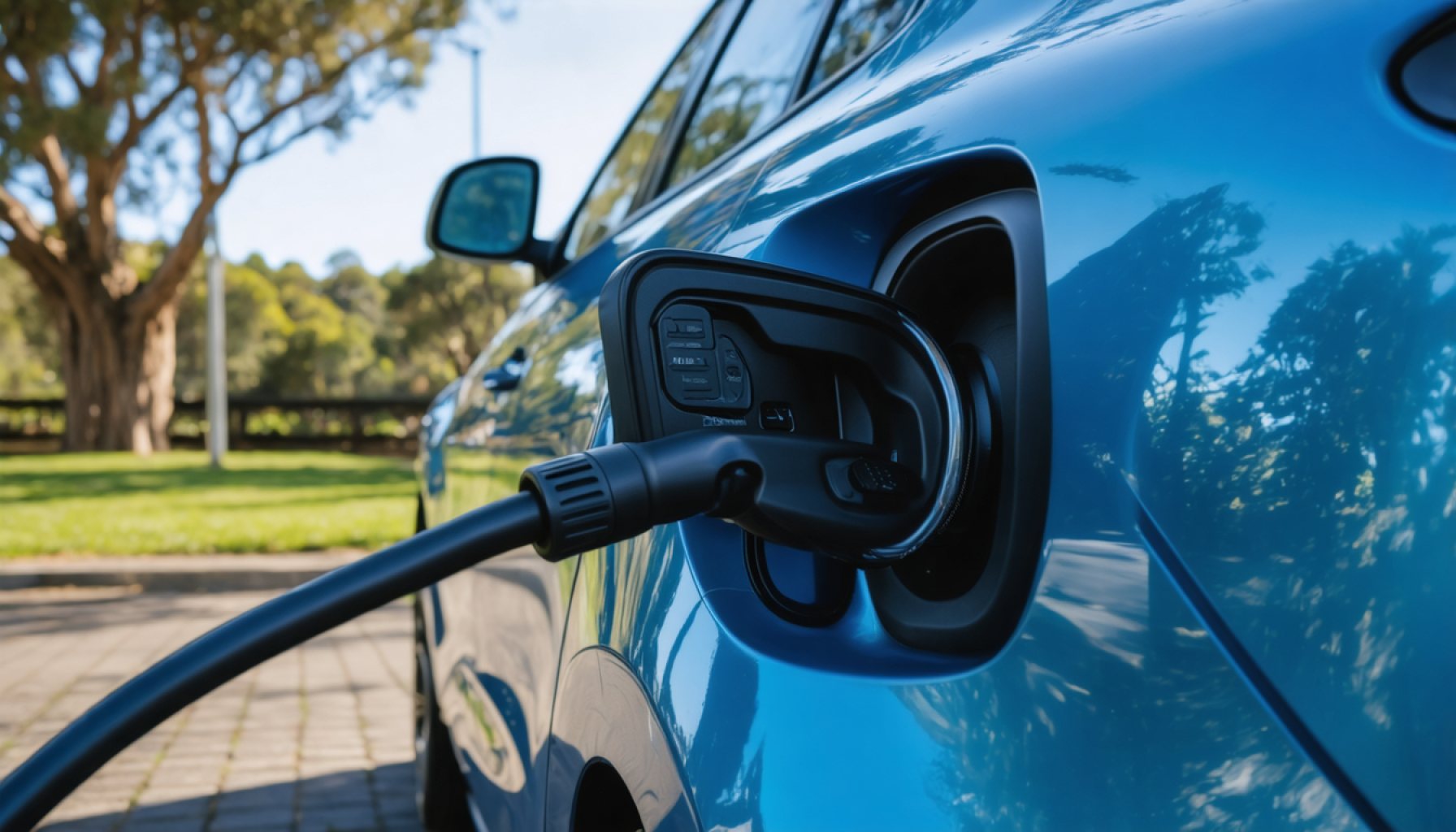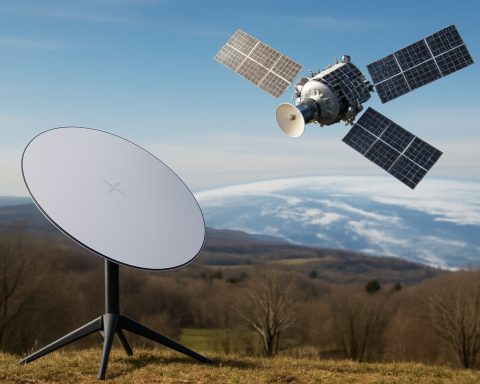- Volkswagen assures that a temporary decline in Australian EV registrations is a normal part of the evolving electric vehicle market.
- The launch of Volkswagen’s all-electric ID.4 and ID.5 models in Australia highlights their strategic approach to EV introduction, tailored to market demands.
- Short-term market volatility is typical in new technology adoption, with initial surges followed by steady growth as EVs gain mainstream traction.
- Australia’s New Vehicle Emissions Standard and other legislative influences create both challenges and opportunities for EV manufacturers.
- Volkswagen’s delay in launching updated models, featuring enhanced technology and performance, aims to increase consumer interest and satisfaction.
- Despite current hurdles, Volkswagen remains committed to diversifying EV offerings, aiming for electric vehicles to become a mainstream option.
- The overarching trend signals a growing transition toward electrification, supported by technological advances and increasing consumer demand.
As electric vehicles (EVs) continue their ascent into the mainstream, the latest trend in Australia might seem unexpected: a temporary dip in EV registrations. Yet, according to Volkswagen, this is merely a fleeting bump on a steadily rising road. The German automotive giant remains steadfast in its optimistic outlook on the electric future.
The spotlight turned to Volkswagen recently as it launched the all-electric ID.4 and ID.5 in Australia. Piergiorgio Minto, Volkswagen Group Australia’s passenger vehicle director, emphasized the unique position of these models, shedding light on the broader trends impacting EV sales. While the medium SUV segment showed signs of slowing, Minto underscored continued growth across other areas, painting a picture of a dynamic market adjusting to new offerings and regulatory landscapes.
The narrative woven by Volkswagen suggests that short-term volatility is typical in burgeoning markets. This is especially true when new technologies like EVs surface, often marked by initial sharp spikes driven by early adopters before more gradual and sustained growth settles in. Daniel DeGasperi, Volkswagen Group Australia’s corporate communications manager, highlighted how these early surges often smooth out as technologies transition to the mainstream.
In navigating this landscape, legislative influences such as Australia’s New Vehicle Emissions Standard play a crucial role. These factors create a blend of challenges and opportunities that require manufacturers to adapt swiftly. As the dust settles from initial adoption waves, the market inches toward a broader acceptance, with more consumers eyeing the longer-term benefits of electric mobility.
Volkswagen’s strategic delay in launching the ID.4 and ID.5 in Australia was no mere hesitation. By waiting, they introduced models updated with robust performance specs and enhanced technology. This decision not only aligns with specific Australian market demands but also sets the stage for stronger consumer interest and satisfaction.
Though the path of EV adoption is not without its hurdles, Volkswagen’s commitment to offering diverse vehicle options signifies its vision for the future. Their focus remains unwavering: to cater to all customers, regardless of their stage in the EV journey. In doing so, they contribute to a future where electric vehicles are not merely an alternative but a mainstream choice.
In essence, the temporary slump in Australian EV registrations is less a cause for concern and more an anticipated phase in a grander journey toward electrification. For those watching from the sidelines, the message is clear: the direction is set. Electric vehicles are here to stay, and their presence on the roads will only expand, powered by evolving technologies and an ever-increasing market appetite.
Surprising Twist in Australia’s EV Market: What Volkswagen’s Strategy Means for the Future
Analyzing the Dip in Electric Vehicle Registrations in Australia
While the recent decline in electric vehicle (EV) registrations in Australia may seem to signal trouble, industry experts, including Volkswagen, suggest otherwise. This dip is seen as a natural fluctuation in a rapidly expanding market. A temporary slowdown often follows an initial burst of interest when a new technology like EVs becomes available, primarily driven by early adopters. Over time, such markets stabilize and continue on a trajectory of growth.
Volkswagen’s Role and Strategic Positioning
Volkswagen’s introduction of the all-electric ID.4 and ID.5 vehicles to the Australian market highlights its strategic foresight. By delaying the release of these models, Volkswagen ensured that they were equipped with advanced performance specs and technology suited for the Australian consumer. This not only aligns with consumer expectations but also showcases Volkswagen’s commitment to delivering quality over speed.
Key Market Trends and Predictions
According to the International Energy Agency, global EV sales have been rising steadily, with an estimated 14% of total car sales in 2022. The Australian market is expected to follow suit as infrastructure develops and battery costs decrease[1]. With increasing government incentives and growing consumer awareness about environmental impact, the transition to electric mobility is poised to accelerate.
The Impact of Australia’s New Vehicle Emissions Standards
Australia’s New Vehicle Emissions Standard is a significant driver of change, pushing manufacturers to innovate and align with greener practices. As regulations become more stringent, automakers like Volkswagen must adapt quickly, positioning themselves for long-term success. Volkswagen’s proactive approach in Australia is an example of leveraging regulatory landscapes to gain market advantage.
Addressing Common Questions and Concerns
What are the benefits of waiting for Volkswagen’s updated models?
Waiting for the updated ID.4 and ID.5 models means access to enhanced technology and better performance specs, making for a more satisfying long-term investment. Consumers benefit from improved features and increased reliability due to further testing and refinements.
Are electric vehicles more cost-effective in the long run?
Yes, while the initial purchase price of an EV can be higher than traditional vehicles, lower running costs, maintenance savings, and government incentives often result in overall cost-effectiveness. According to a study by the Electric Vehicle Council of Australia, EV owners save approximately 70% in fuel and maintenance.
Actionable Tips for Potential EV Buyers
– Research Incentives: Explore state and federal incentives available for EV purchases to maximize savings.
– Assess Charging Solutions: Consider home charging installations or accessibility to nearby charging stations.
– Test Drives: Test drive various models like the VW ID.4 and ID.5 to understand their unique features and driving experiences.
Conclusion
While fluctuations in EV registrations might cause temporary hesitation, the overall trend is unmistakably upward. With strategic players like Volkswagen in the mix, the future of electric mobility in Australia is firmly in focus, driven by innovation, regulation, and consumer demand.
For further information about Volkswagen and their electric vehicle offerings, visit Volkswagen.
—
[1] International Energy Agency (IEA), “Global EV Outlook 2023”.
Electric Vehicle Council of Australia, “Electric Vehicle Savings Report 2023”.









